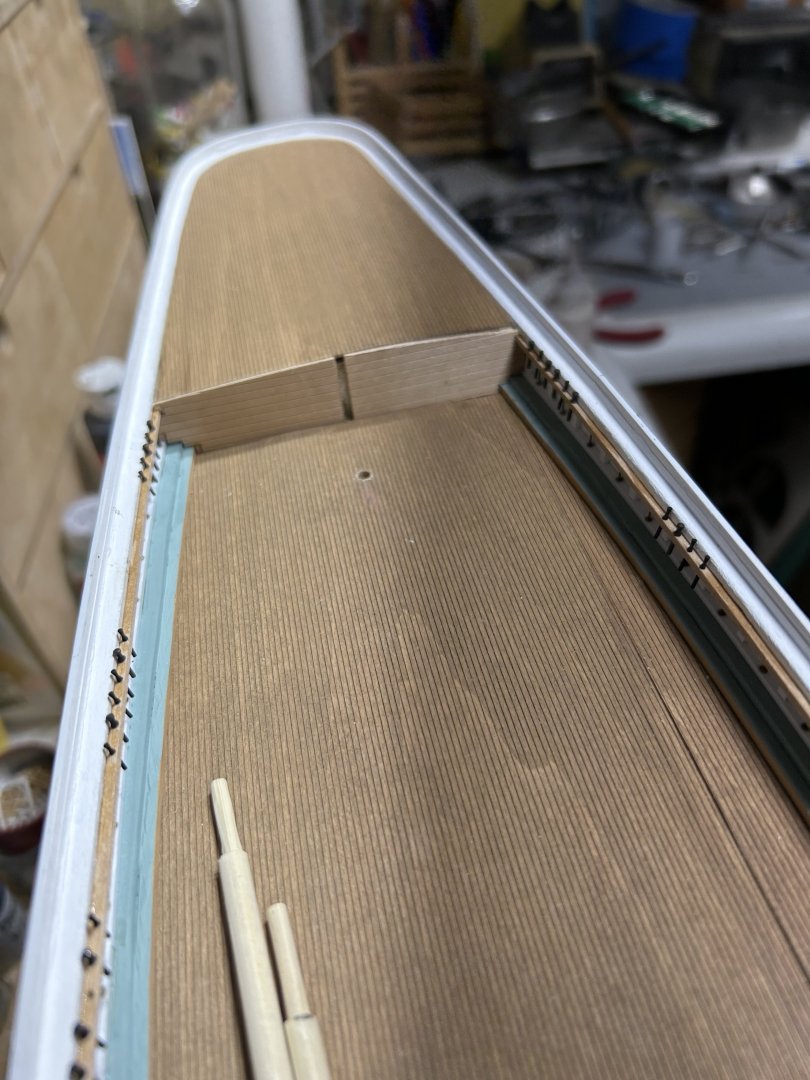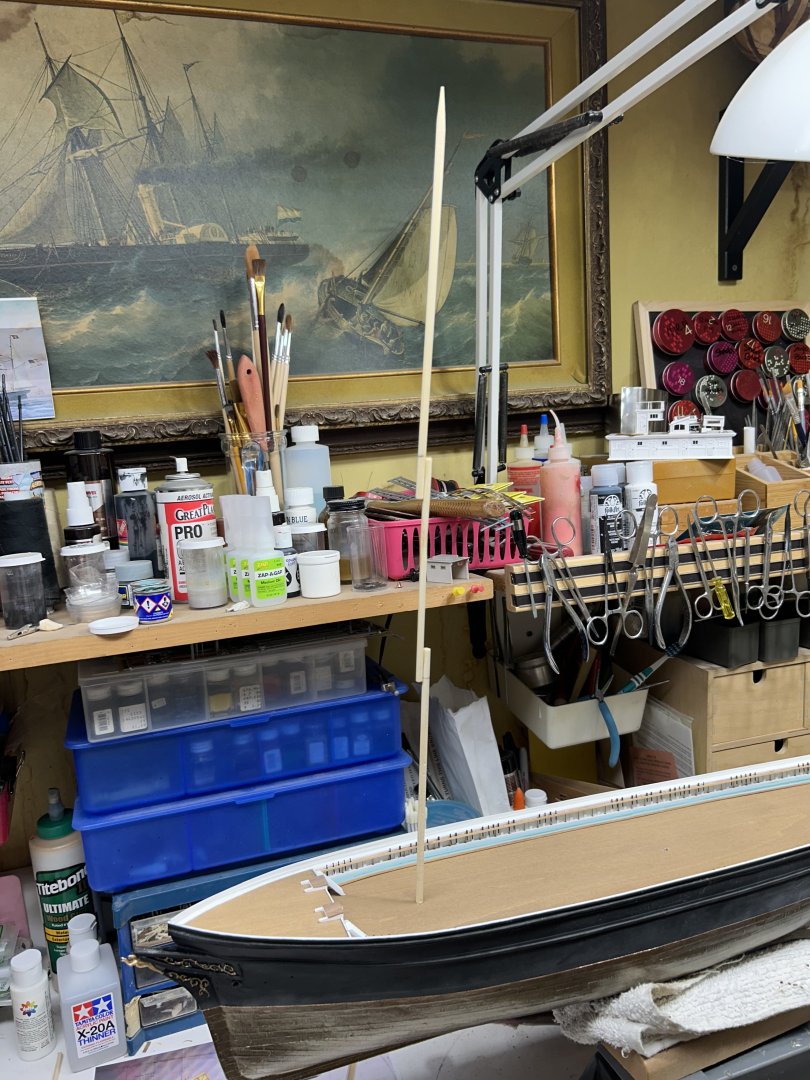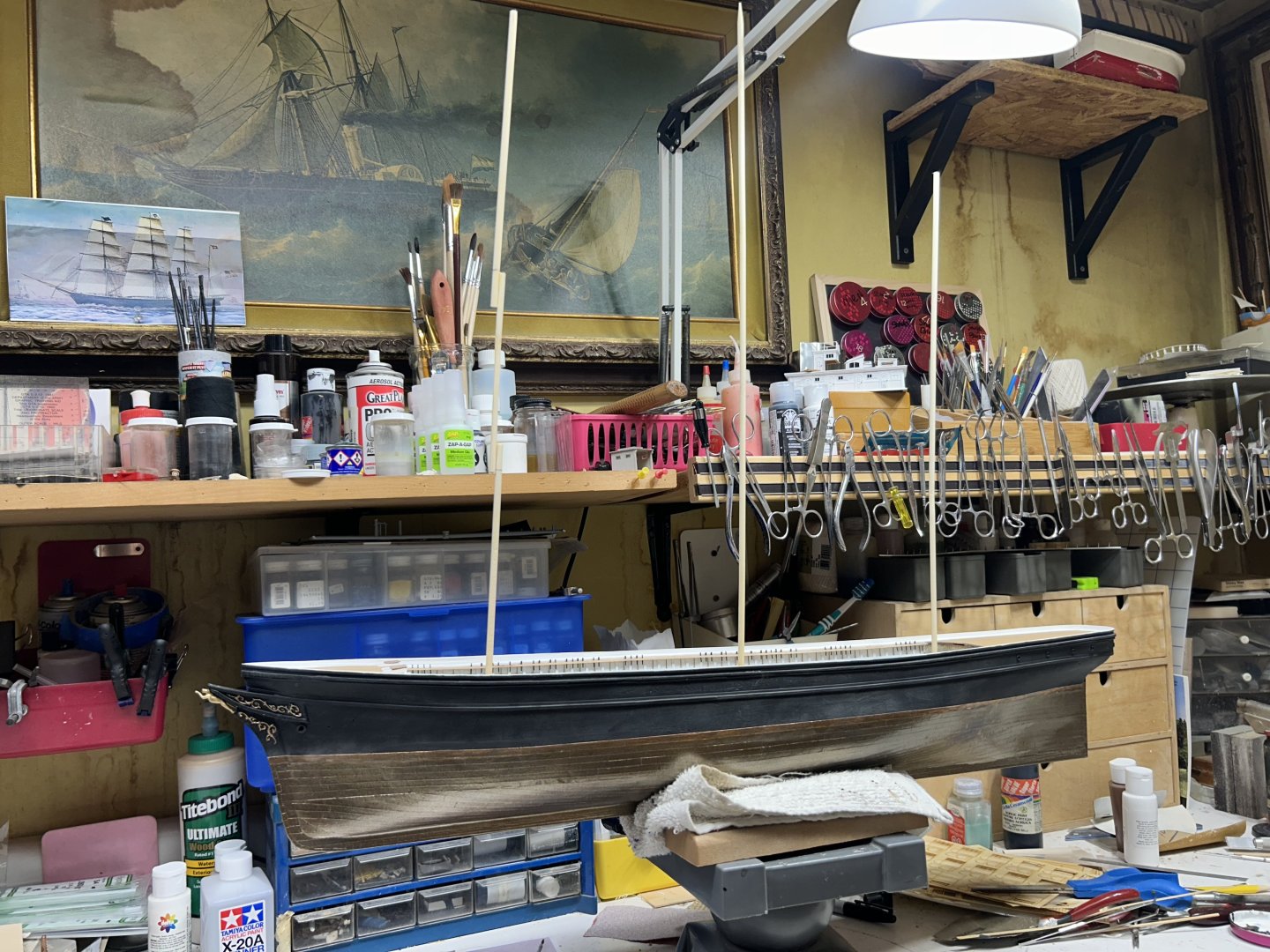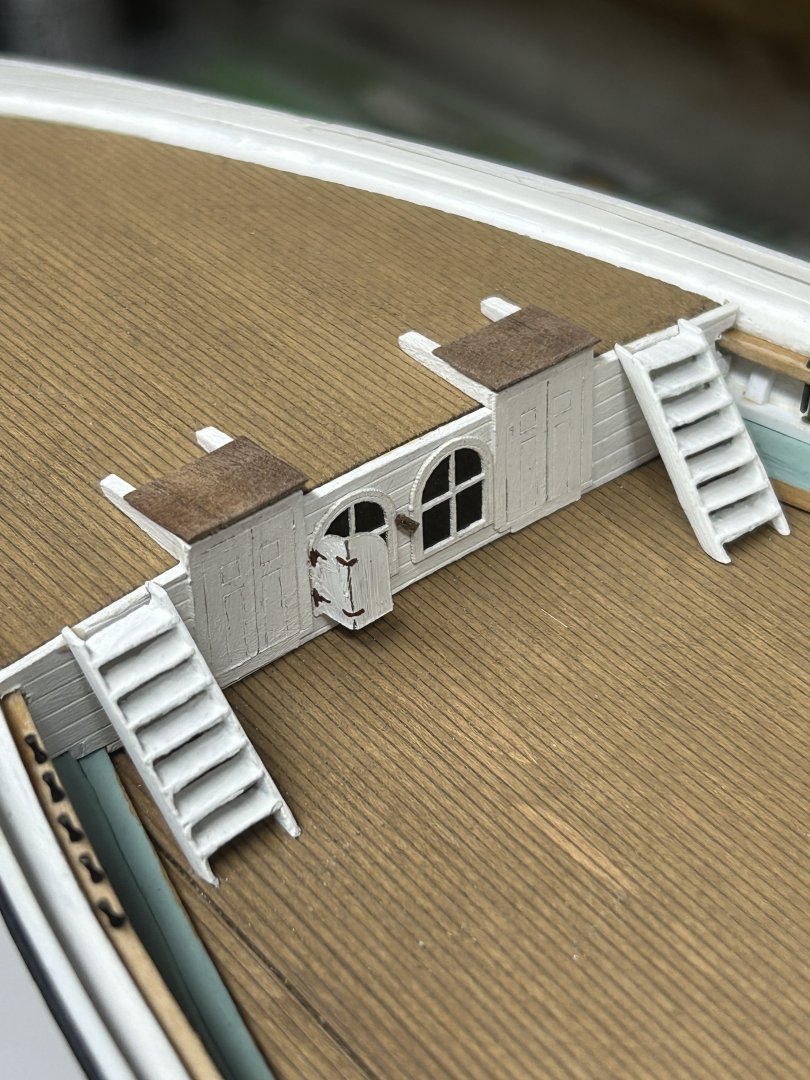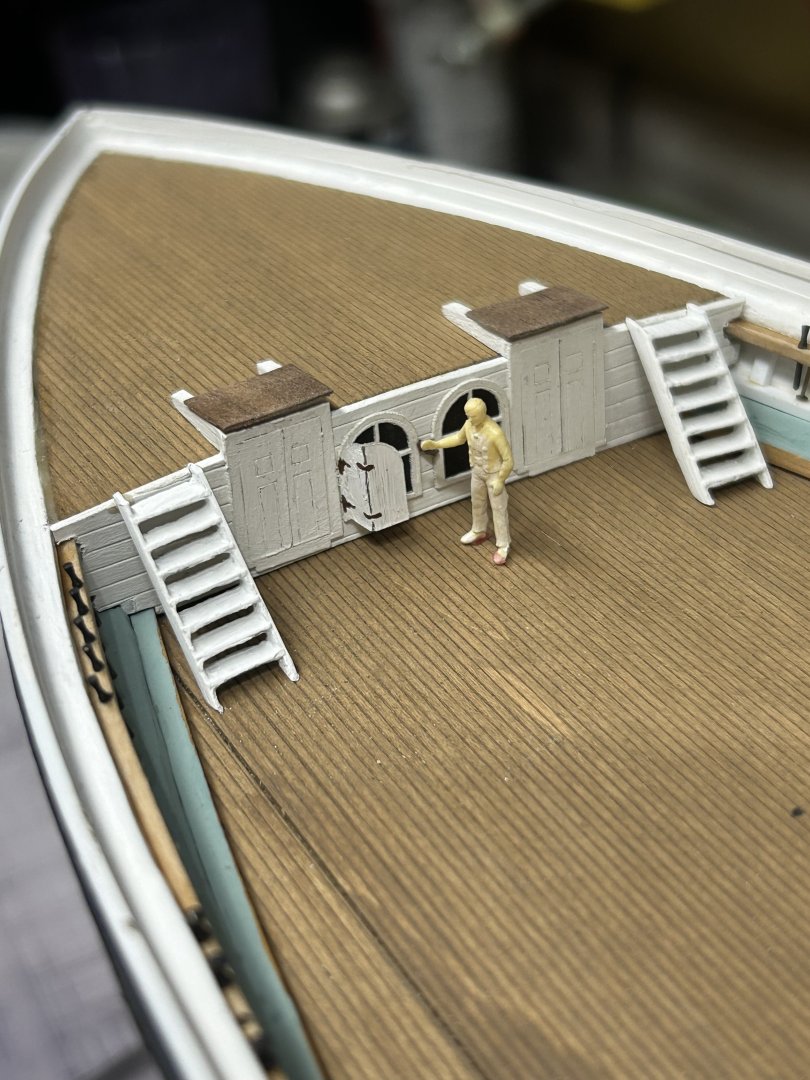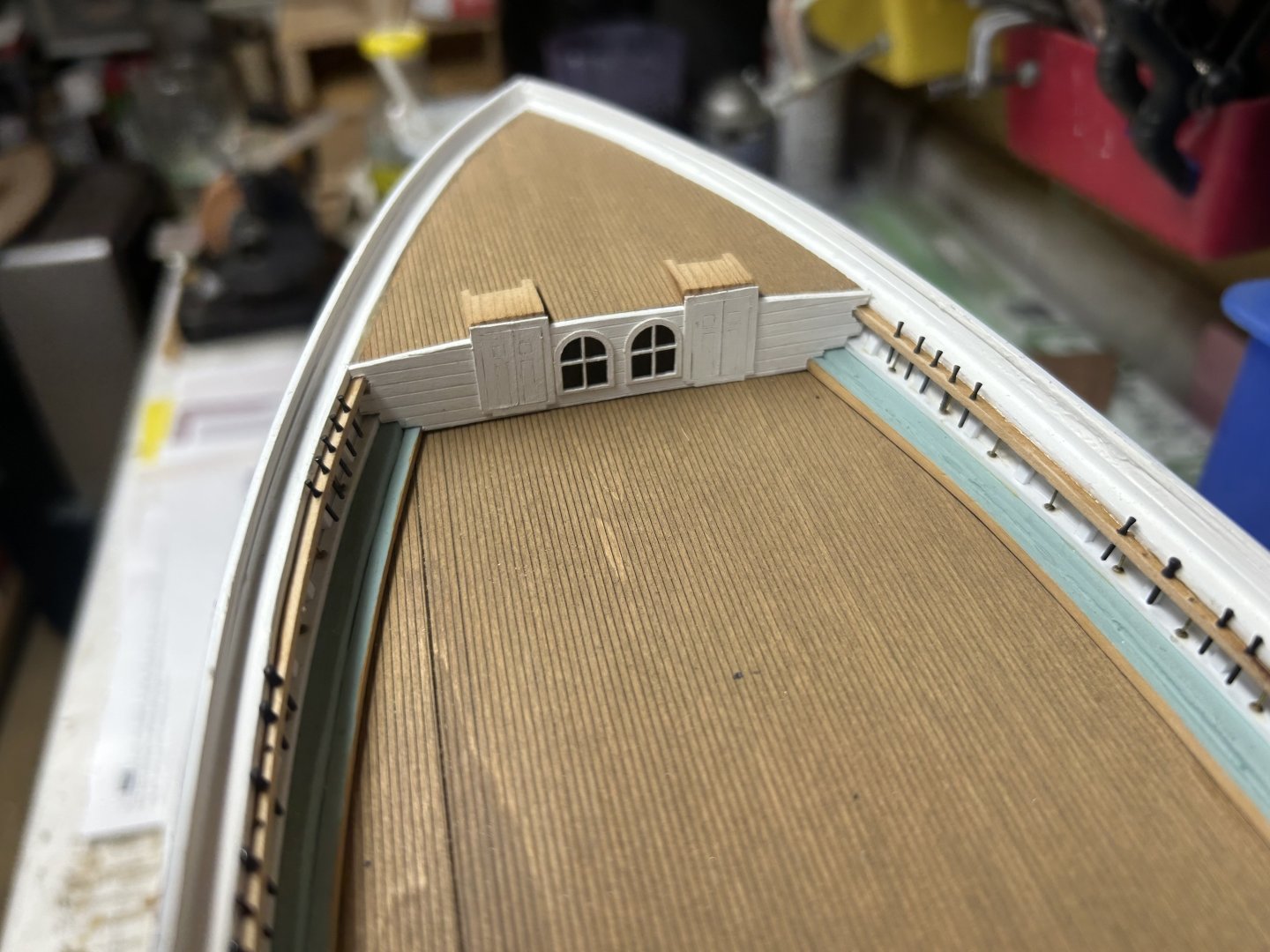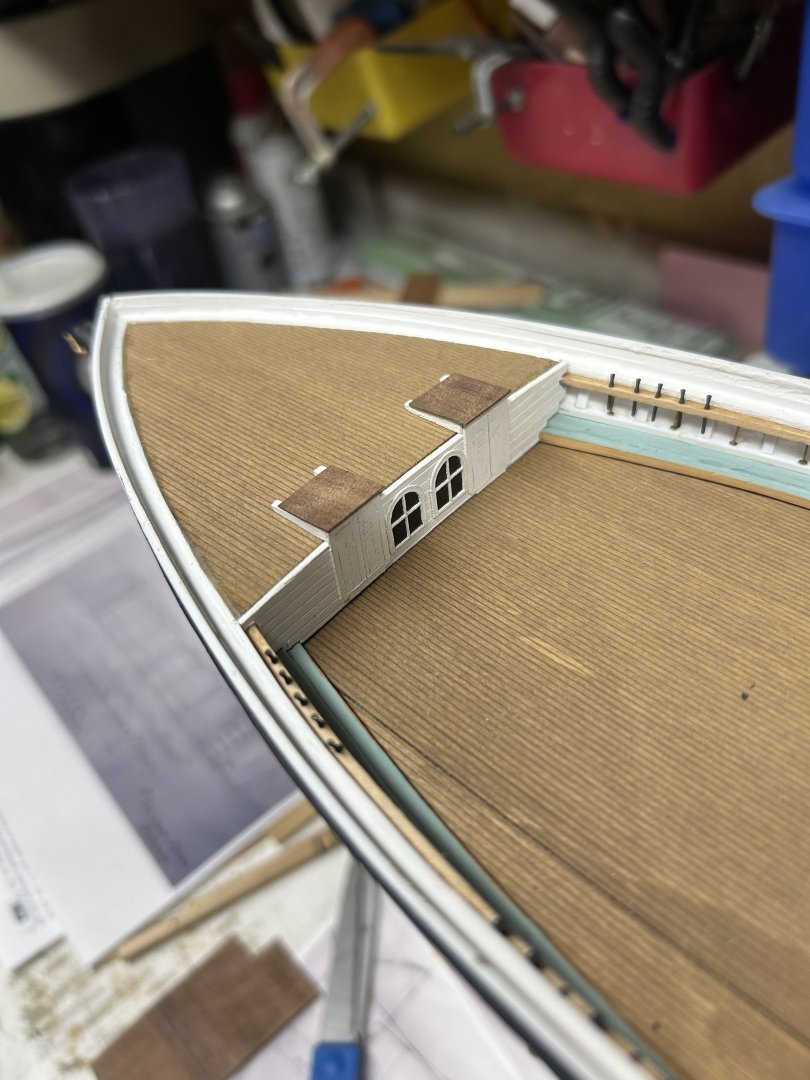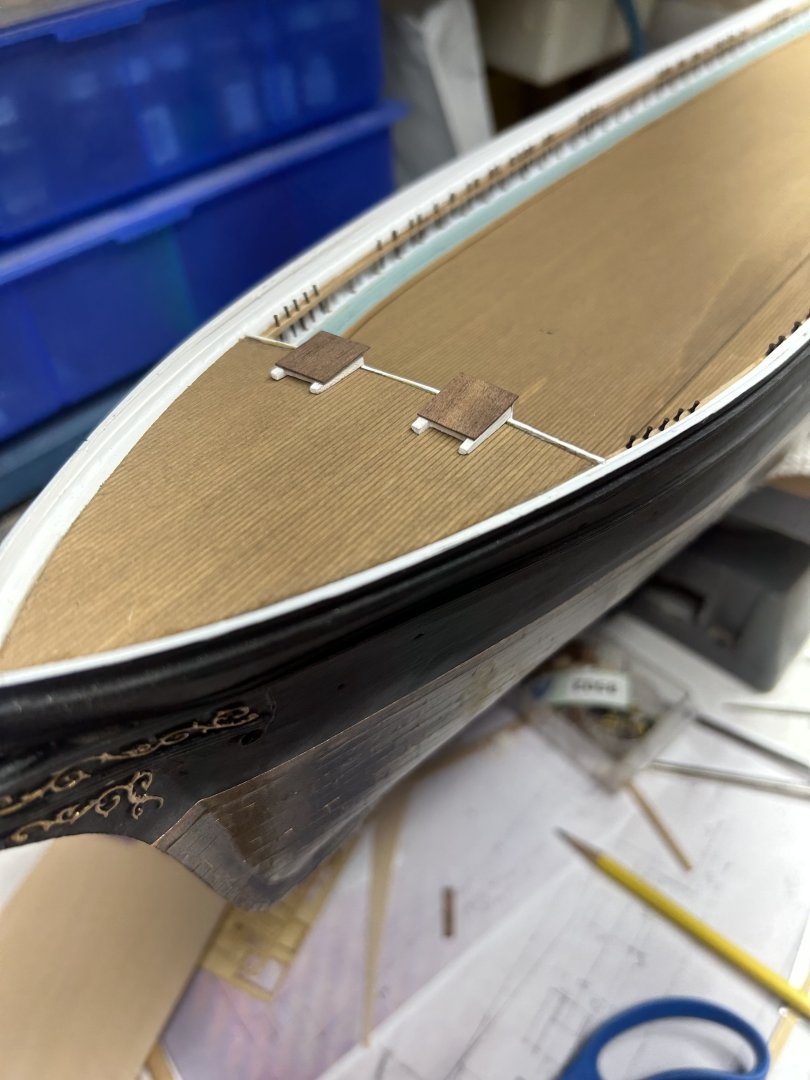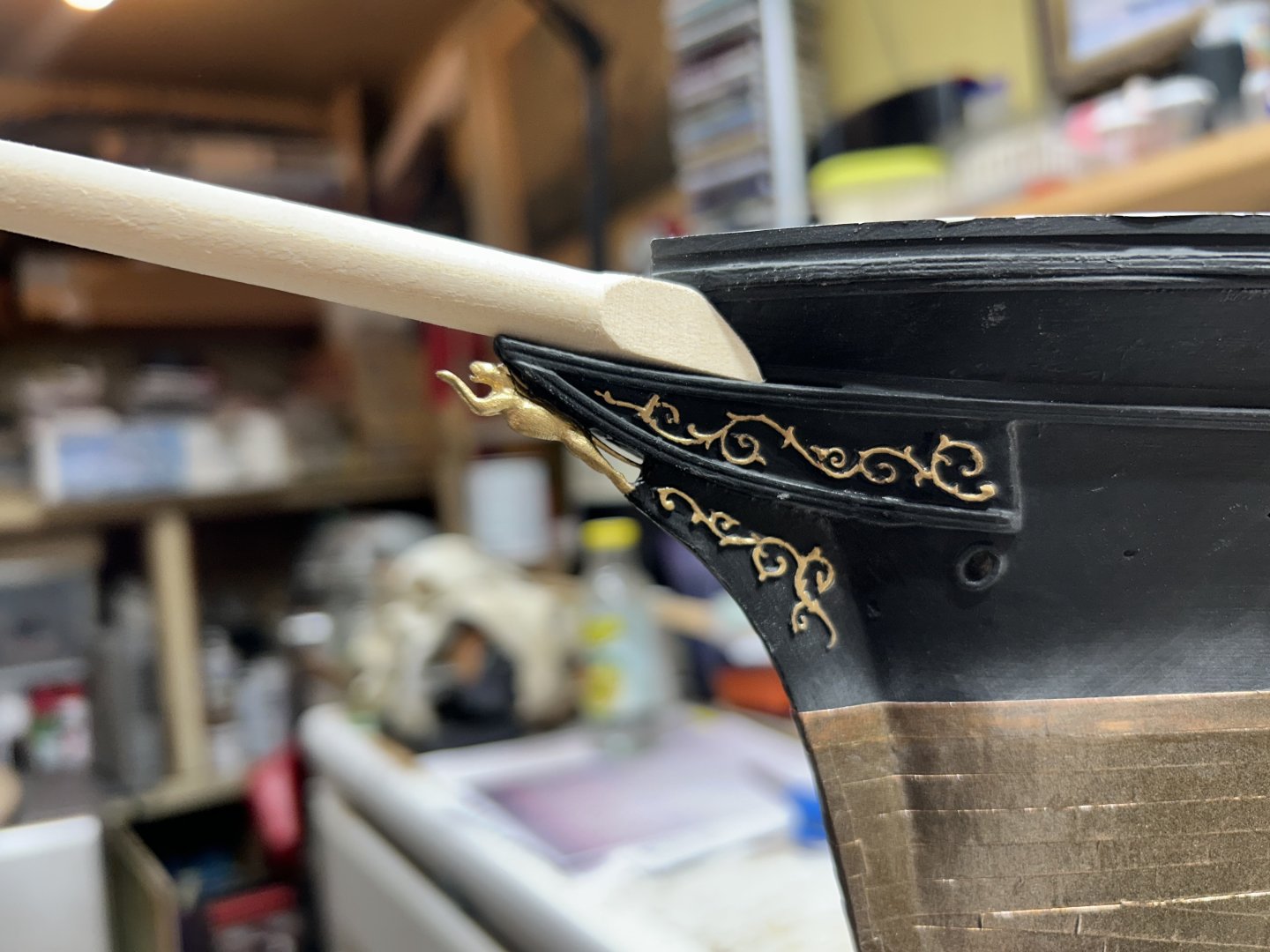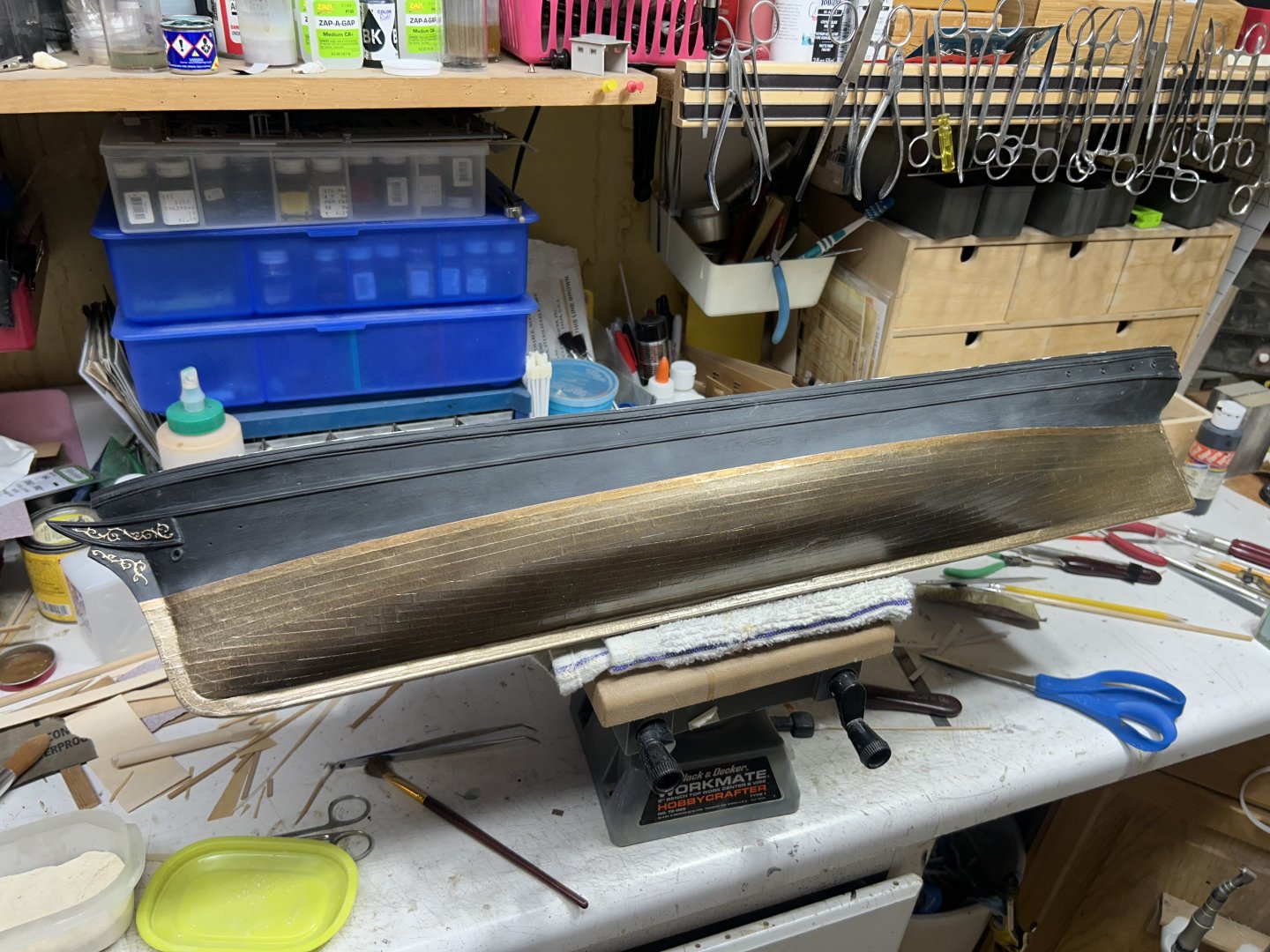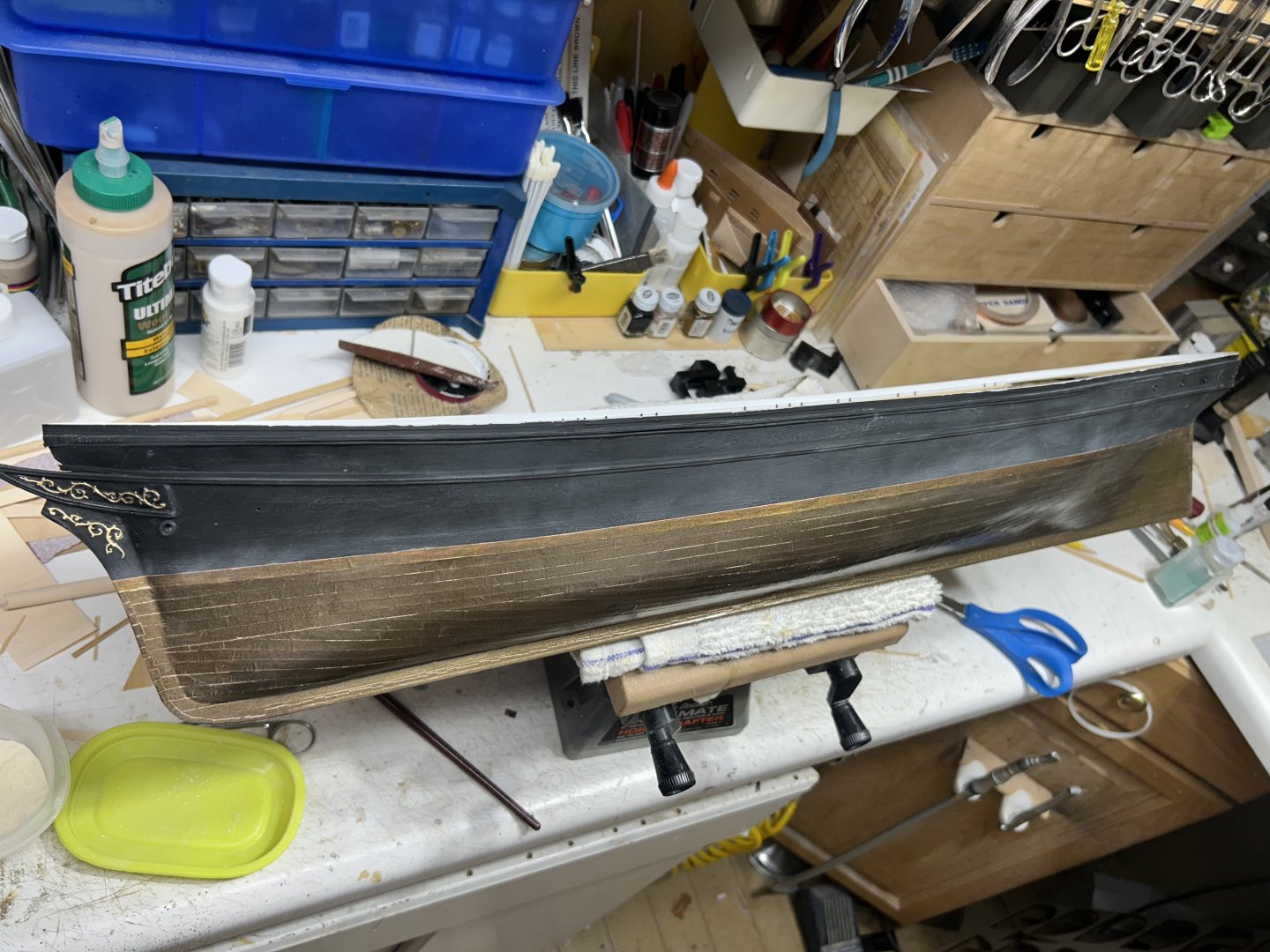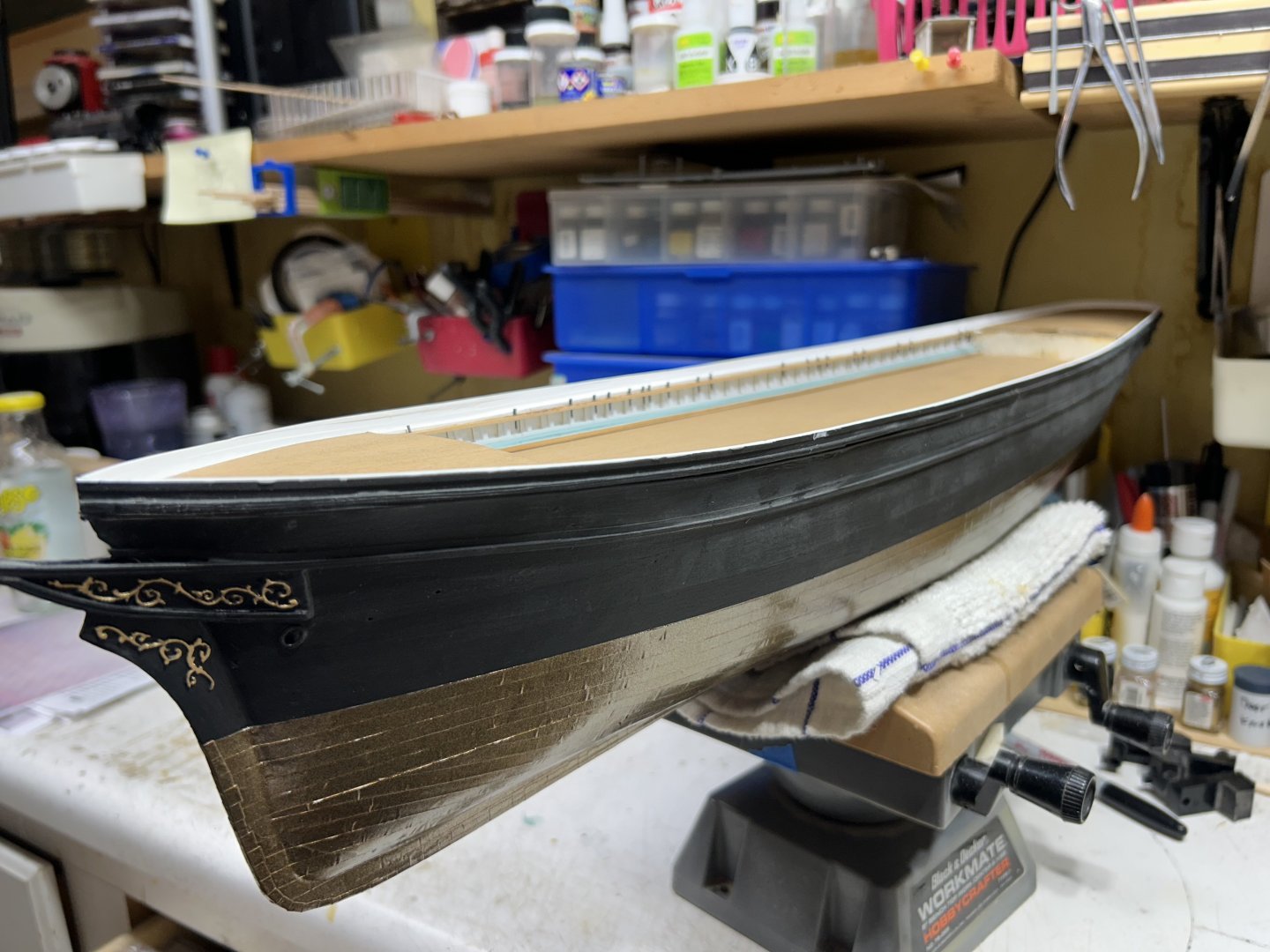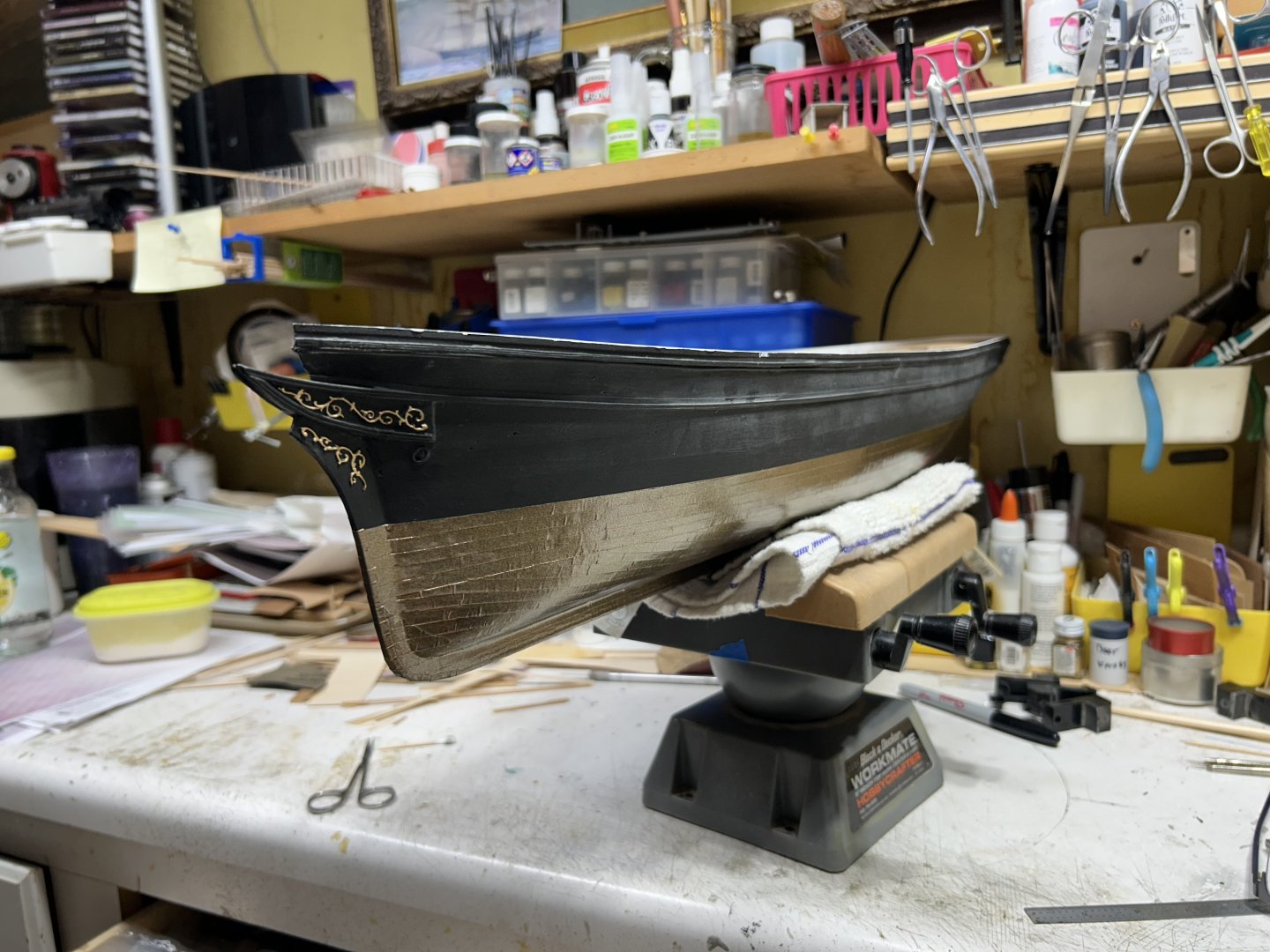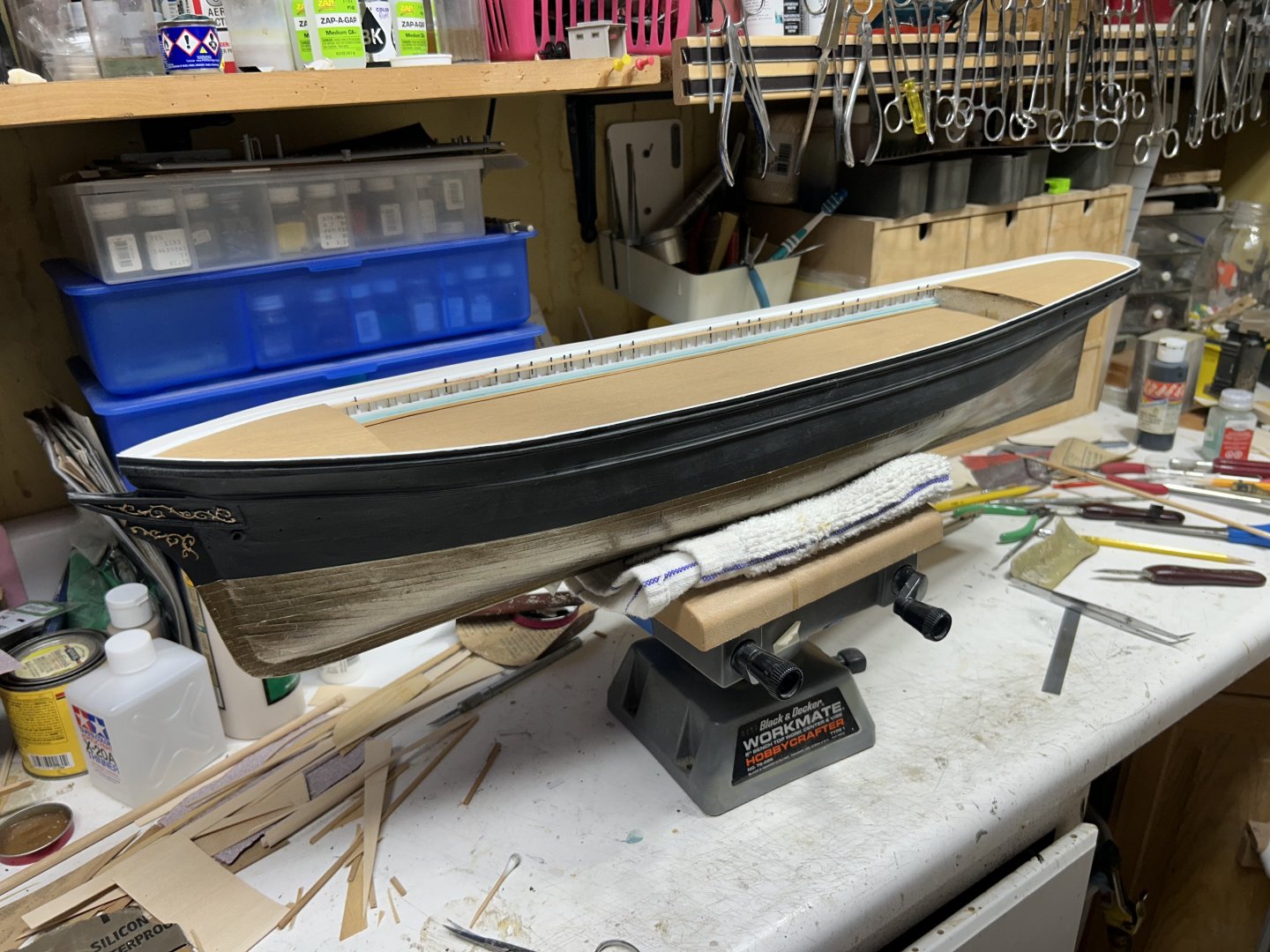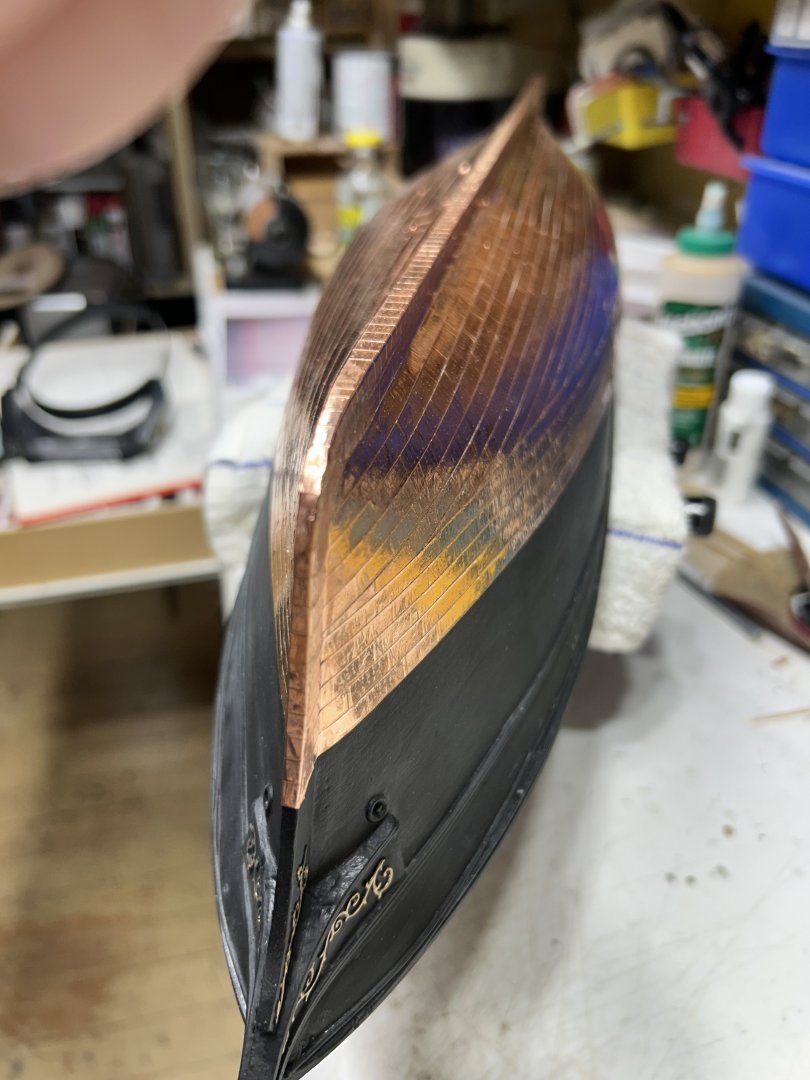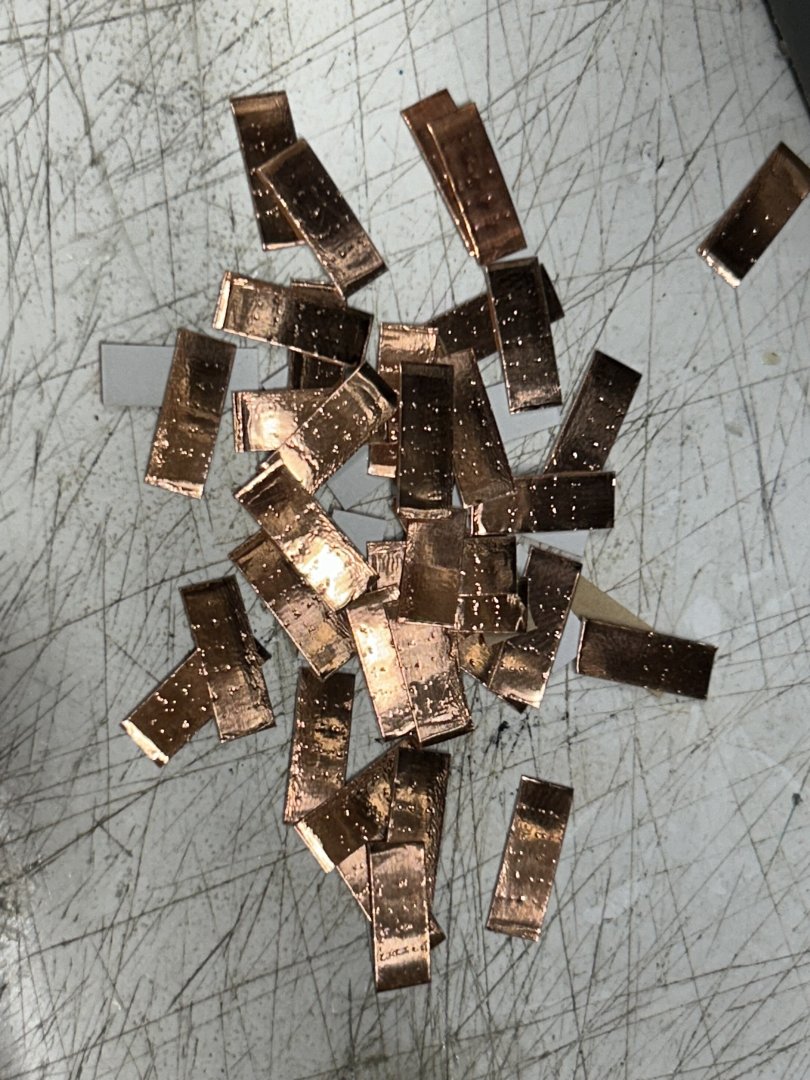-
Posts
5,512 -
Joined
-
Last visited
Content Type
Profiles
Forums
Gallery
Events
Everything posted by rwiederrich
-
Further research shows that Chapelle's drawing shows the point of the forecastle facing bulkhead is rough 29.5 ft across....making our 27ft rough guesstimate pretty close...considering all other hull modifications. Notably the reconstructing of the forecastle front and relocating the W/C's and windless internally. Rob
-
Staghound, was probably dimensioned after the typical *fish* body method. With her fullness being amidships and then tapering aft to her narrowest...at 24.5ft. Forward, we can only assume her entry followed the natural curvature and inclination to terminate with a sharp entry at her cutwater. Everything in between, is an educated speculation. McKay's own half model is our only data point. A good top view would have been nice. Still you can make a good educated guess from the images you acquired. Personally, if her forward extreme was any wider than she is currently....it would change her overall body curve....forcing her widest section to be moved farther forward. Or at worst, not giving her the smooth contours she has. This is exactly the issue I was projecting on the issue of scaling transcription errors. We are moving from the verbal (An that is vary subject specific),to the 3 dimensional. Even with McLean's measurements....were they inside or outside measurements? Taken from a corner or a projection of molding? How does one extrapolate...ABOUT? Rob(Moving forward)
-
Here's the call Druxey. We do know the space was *airy, well ventilated and well lit*. This is the first time the forecastle of Staghound or any early McKay clipper has been truly realized. The working windless was below decks...3ft below, actually. Like any window...I would assume there were clap shutters that were applied during heavy weather. I placed the windows just over a scale foot or so above the decking. and the companionways doors 6 scale inches. this means the windows are 4ft above the floor in the forecastle space and going nearly to the ceiling. She also had prismatic ceiling light fixtures to aid in her illumination. I admit it is a deviation from what we have always assumed.....like the McKay stem/cutwater, *hood*. These interpretations are not of my own doing...however the construction and expression is. I might even simulate on one window the addition of a partly opened shutter....to drive home the clear practicality and application. Thanks, for the question. Rob
-
See...this is the stuff of scaling transcription errors. I knew right away, you would bring this up.😆 From your original drawing we *concluded* the width to be 27ft. No real true dimension is ever given from McLean....only that her entry was the sharpest ever seen on her model. In this space I could only fit the two companionways,(3ft including jams) and the ladders(3ft),(required to ascend and descend) her forecastle deck. What was left over was trepidatiously divided for windows, space between fixtures and such. I don't recall the actual width off my head, but I do know it is around 26.5 scale ft.....not 18~20. I'll reverify when I get home. No windows were places outboard the ladders...this space is relocated for the below deck W/C's. I might still add some paneling embellishments. Rob
-
Everything is just test fit. I’ll reduce the companionways roofs slightly and add the ladders on either side of each companionway outboard. I opted to add only 2 windows for the forecastle front. It looked crowded and a bit overdone with four smaller windows. I figured I’d add this and the poop cabin facing before beginning the channels. Rob
-
Your 1/78 scale allows for greater detailing and, thus requires far greater perfection of that detailing. I have the ability....just not the desire, to build any larger then my little 1/96 scale. Just enough detail to wow the critics, but not so much to extract any joy I may derive from building the model in the first place. One time...and only one time did I ever build a clipper larger then 1/64 scale. It was as large as a canoe. I only did the hull. Waaay too large.......waaay too much ambition. Plus, these models have to fit with each other in the house. One reason I strayed from 1/96, when I built the Great Republic. It would have been 6ft long...and no place to live in the house. I truly am moved that you would even consider thinking my work has any respectable merits. again....thanks. I'm enjoying your CS build vary much too. Rob
- 95 replies
-
- Cutty Sark
- Sergal
-
(and 1 more)
Tagged with:
-
She is a much sleeker shallower model for sure. I appreciate your investigation into the more accurate hull contours....but I ain't going back and since we know the narrowest point was only 24.5ft...it is only within the bowing of her hull from there to her max breadth of 40ft that can be contested. The images never show exactly what you want to show and they ALWAYS reveal what you don't want to show....flaws in detail and workmanship. Well...I'm moving onto the next phase...addition of the chainplates and channels. this process takes time and, thus I will have to build mock-up masts to properly attain the correct angles for the chainplates. So as I had mentioned to Druxey....I will be slowing down for this. I also have to make the 60 or so chainplates and their connective plates prior to install. But first, I've identified some overlooked items I have to address first....items that will require some additional time and correction. Even things get past me......magine that. Rob
About us
Modelshipworld - Advancing Ship Modeling through Research
SSL Secured
Your security is important for us so this Website is SSL-Secured
NRG Mailing Address
Nautical Research Guild
237 South Lincoln Street
Westmont IL, 60559-1917
Model Ship World ® and the MSW logo are Registered Trademarks, and belong to the Nautical Research Guild (United States Patent and Trademark Office: No. 6,929,264 & No. 6,929,274, registered Dec. 20, 2022)
Helpful Links
About the NRG
If you enjoy building ship models that are historically accurate as well as beautiful, then The Nautical Research Guild (NRG) is just right for you.
The Guild is a non-profit educational organization whose mission is to “Advance Ship Modeling Through Research”. We provide support to our members in their efforts to raise the quality of their model ships.
The Nautical Research Guild has published our world-renowned quarterly magazine, The Nautical Research Journal, since 1955. The pages of the Journal are full of articles by accomplished ship modelers who show you how they create those exquisite details on their models, and by maritime historians who show you the correct details to build. The Journal is available in both print and digital editions. Go to the NRG web site (www.thenrg.org) to download a complimentary digital copy of the Journal. The NRG also publishes plan sets, books and compilations of back issues of the Journal and the former Ships in Scale and Model Ship Builder magazines.



